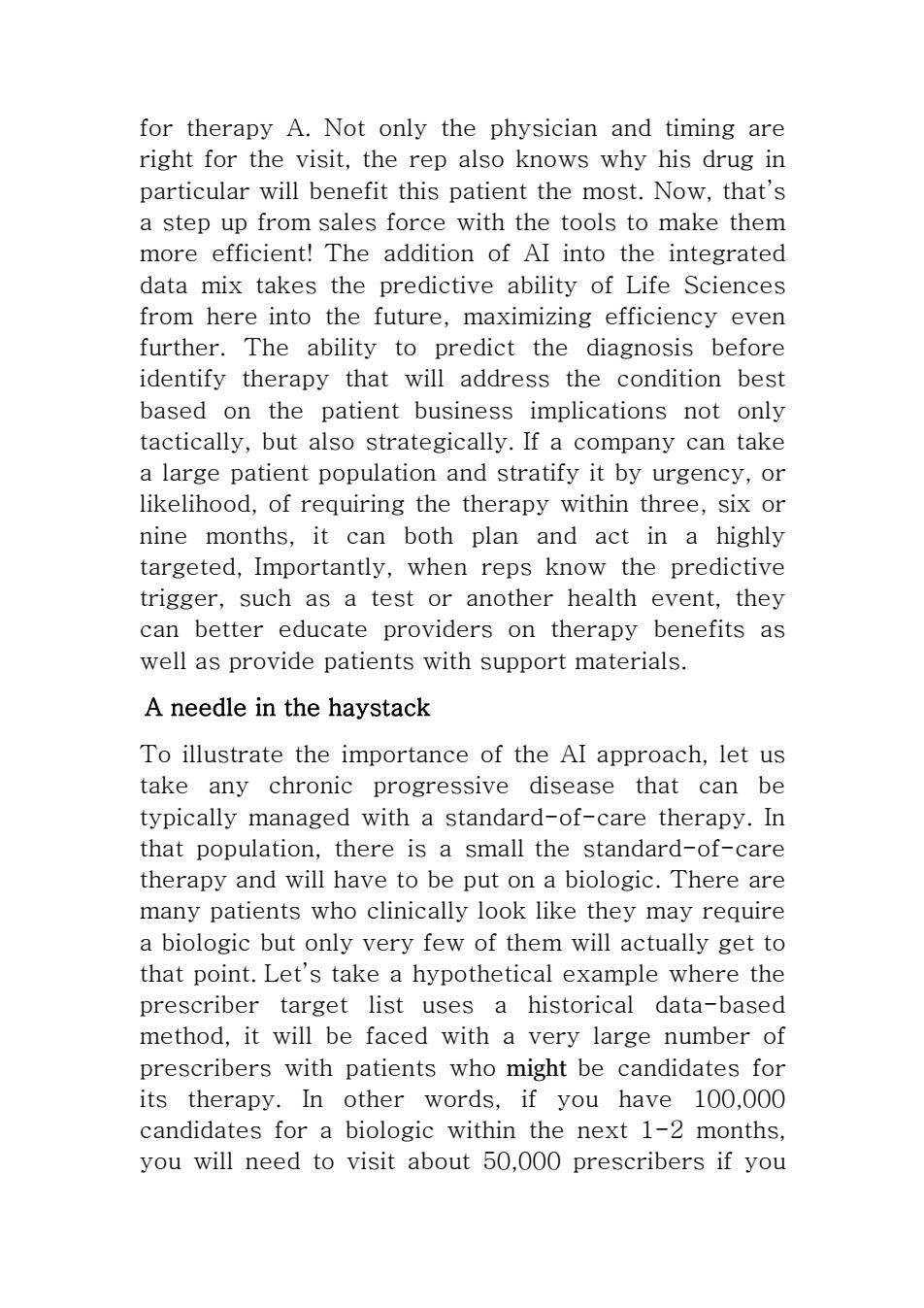正在加载图片...

for therapy A.Not only the physician and timing are right for the visit,the rep also knows why his drug in particular will benefit this patient the most.Now,that's a step up from sales force with the tools to make them more efficient!The addition of AI into the integrated data mix takes the predictive ability of Life Sciences from here into the future,maximizing efficiency even further.The ability to predict the diagnosis before identify therapy that will address the condition best based on the patient business implications not only tactically,but also strategically.If a company can take a large patient population and stratify it by urgency,or likelihood,of requiring the therapy within three,six or nine months,it can both plan and act in a highly targeted,Importantly,when reps know the predictive trigger,such as a test or another health event,they can better educate providers on therapy benefits as well as provide patients with support materials. A needle in the haystack To illustrate the importance of the Al approach,let us take any chronic progressive disease that can be typically managed with a standard-of-care therapy.In that population,there is a small the standard-of-care therapy and will have to be put on a biologic.There are many patients who clinically look like they may require a biologic but only very few of them will actually get to that point.Let's take a hypothetical example where the prescriber target list uses a historical data-based method,it will be faced with a very large number of prescribers with patients who might be candidates for its therapy.In other words,if you have 100,000 candidates for a biologic within the next 1-2 months, you will need to visit about 50,000 prescribers if youfor therapy A. Not only the physician and timing are right for the visit, the rep also knows why his drug in particular will benefit this patient the most. Now, that’s a step up from sales force with the tools to make them more efficient! The addition of AI into the integrated data mix takes the predictive ability of Life Sciences from here into the future, maximizing efficiency even further. The ability to predict the diagnosis before identify therapy that will address the condition best based on the patient business implications not only tactically, but also strategically. If a company can take a large patient population and stratify it by urgency, or likelihood, of requiring the therapy within three, six or nine months, it can both plan and act in a highly targeted, Importantly, when reps know the predictive trigger, such as a test or another health event, they can better educate providers on therapy benefits as well as provide patients with support materials. A needle in the haystack To illustrate the importance of the AI approach, let us take any chronic progressive disease that can be typically managed with a standard-of-care therapy. In that population, there is a small the standard-of-care therapy and will have to be put on a biologic. There are many patients who clinically look like they may require a biologic but only very few of them will actually get to that point. Let’s take a hypothetical example where the prescriber target list uses a historical data-based method, it will be faced with a very large number of prescribers with patients who might be candidates for its therapy. In other words, if you have 100,000 candidates for a biologic within the next 1-2 months, you will need to visit about 50,000 prescribers if you